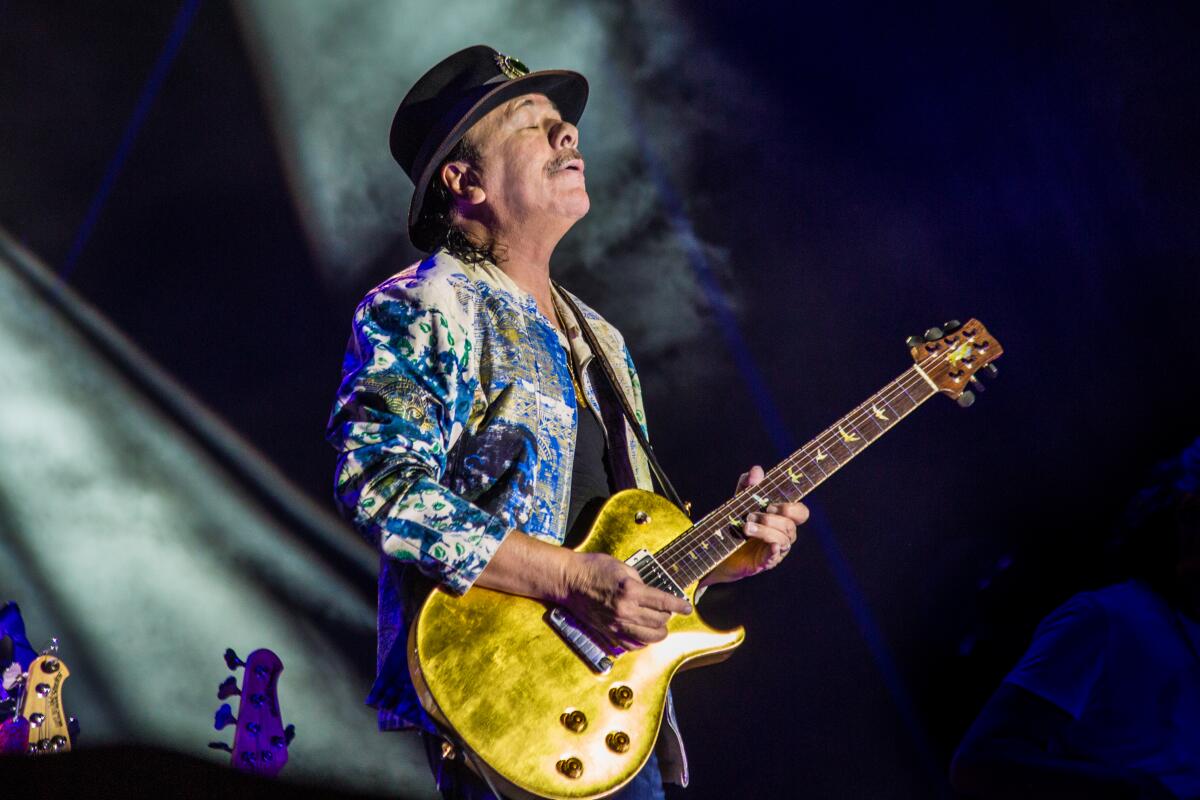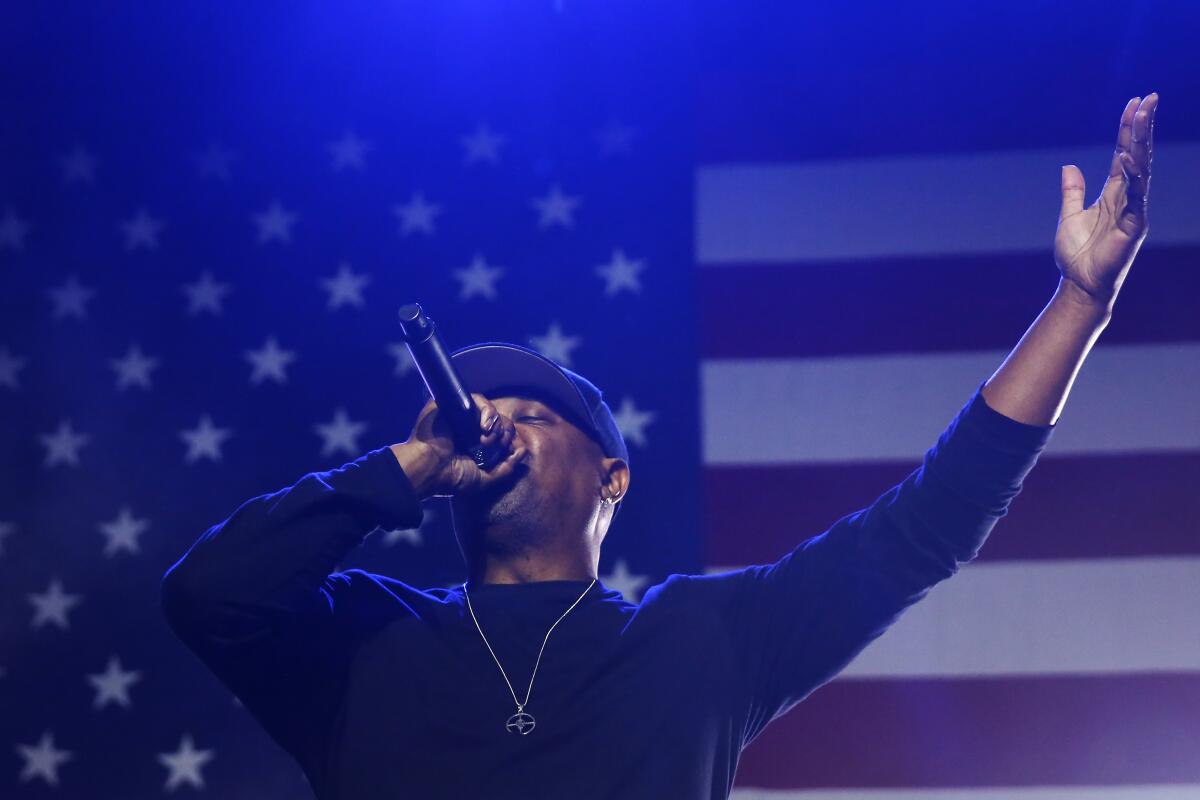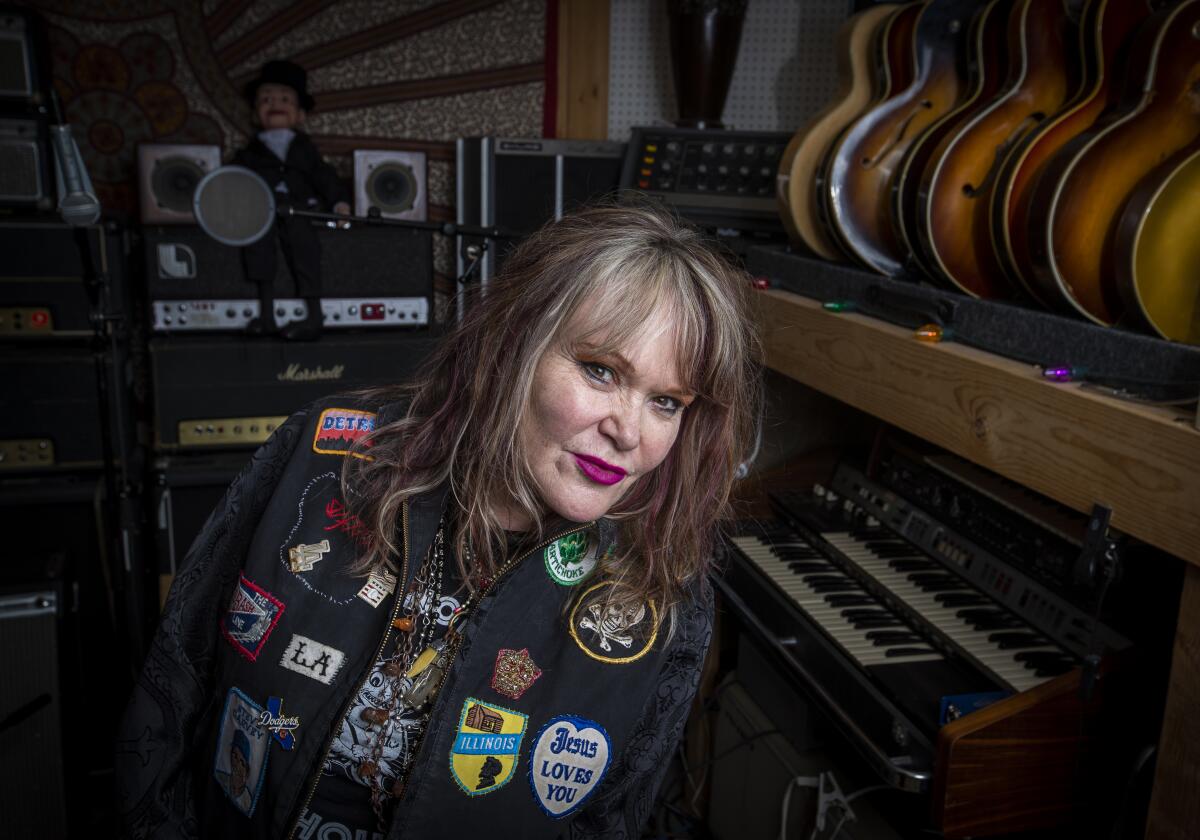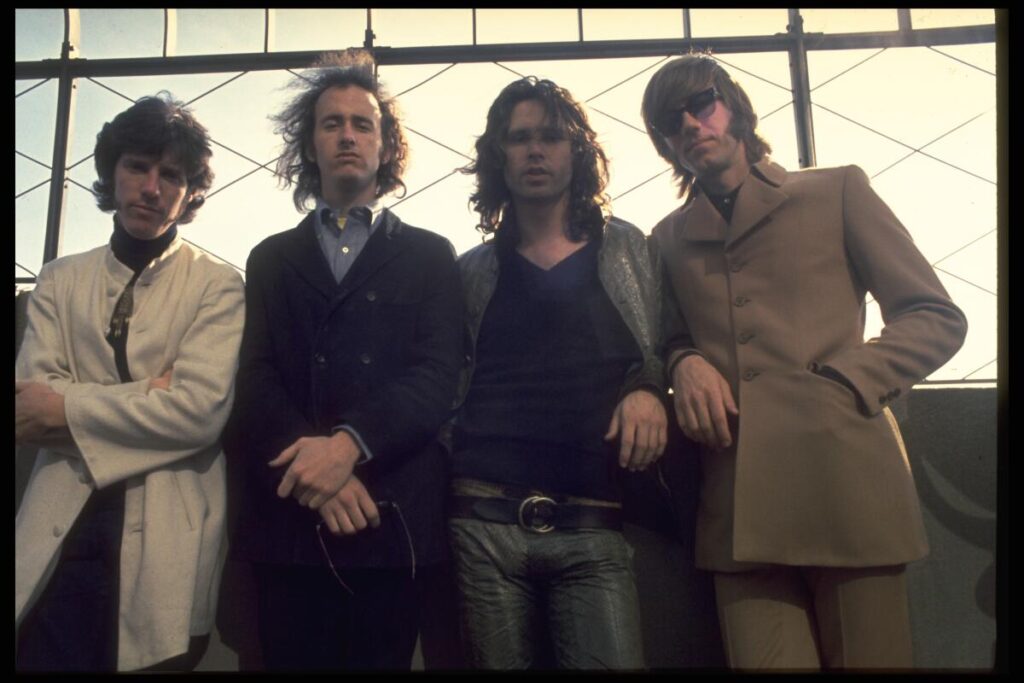Recently, Red Hot Chili Peppers bassist Flea selected punk rock icons X as his choice for greatest L.A. band. For X lead singer Exene Cervenka, her pick is an equally easy one. “It’s the Hollywood experience, the Walk of Fame, Lana Turner. The Doors are part of that, woven into that magic.”
The sand and surf might belong to the Beach Boys. But L.A. nightlife, the Sunset Strip, the avant-garde, the alternative world all come from the mighty shadow of the Doors. It began 60 years ago when Jim Morrison, Ray Manzarek, Robby Krieger and John Densmore lit the world on fire.
In the five albums and six years they existed as a quartet before Morrison died in Paris in 1971 at age 27, the Doors crafted a legacy that is not only a cornerstone of L.A. lore, but has traveled from the beaches of Venice, where they formed, the world over countless times. The myth and legend of the Doors continues to grow.
To commemorate the milestone anniversary, we spoke to living Doors members Densmore and Krieger as well as Carlos Santana, Bootsy Collins, Cervenka, Chuck D (Public Enemy), L.A. jazz musician José James, British icon Robyn Hitchcock and paleontologist Kenneth Lacovara of the Edelman Fossil Park & Museum in New Jersey — about six decades of the Doors.
Doors members:
John Densmore: The songs have deepened for me. I’m still fathoming Jim’s lyrics. I love his lyrics and I knew they were deep, but here and there, I’ll pick up an obscure lyric and I’ll just flip for it. “No eternal reward will forgive us now for wasting the dawn.” What a brilliant line. The songs are creation. Creation didn’t happen a long time ago and we’re going to all go to heaven. Creation is ongoing. That’s what we have to keep remembering in the face of all this darkness.
I hope [the music’s] always been an oasis, and healing. Jim wrote “Unknown Soldier.” He didn’t say Vietnam, but it was during those times that was clearly against that and all wars.
I hoped I could pay the rent for 10 years and it’s 60 or whatever it is. I love being complimented. But I’m more excited and interested in my jazz project. I also did an album with Chuck D. It’s going to be alt hip-hop. And that’s coming. And I have a poetry album. I’m not writing poetry, but I am reading and playing hand drums and reading, Jim and various poets. That’s what turns me on and it’s not going to be “Light My Fire” and that’s OK because it’s been downhill ever since. That f—ing song was number one for 26 weeks. What do you do after that?
It’s very touching to hear people say the first time they ever made love or got high, or they got through the wars in the jungles of Vietnam with our help sonically. That pleases me greatly.
The members of the Doors are shown in the famed rock band’s glory days. From left, drummer John Densmore, guitarist Robby Krieger, singer/lyricist Jim Morrison and keyboardist Ray Manzarek. Morrison died in France in 1971 at the age of 27. Manzarek died in Germany in 2013 at the age of 74.
(Photo by Paul Ferrara/ © Doors Property, LLC.)
Robby Krieger: I was amazed that we got on the radio in the first place, and played at places like the Whisky, much less 60 years later. No idea.
I’ve been playing these songs forever and ever. There was a time, say 20 years, when I was just playing jazz and stuff like that. I was just through with the Doors. It’s not that I hated the Doors or anything like that, I figured the Doors were done. Jim was gone. We had tried to get along without him for three or four years. We actually were doing pretty well. We played Carnegie Hall with just me, John and Ray. It was pretty amazing. So, we could’ve kept going as the Doors, but we couldn’t get along. After Jim was gone, the three of us just couldn’t get along with each other. The bond was broken.
When the Oliver Stone movie came out, that really piqued the interest in the Doors again. So, when that happened we had so many requests to play those songs again.
There were a lot of them that we really never played in person with Jim because once Miami happened we couldn’t play hardly anywhere because they had this thing called the hall manager’s association and they would not let us play it because they were afraid, “Oh, we’re going to pull it out.” That’s why we did so many albums in such a short amount of time. We couldn’t get any gigs. So, we ended up just recording a lot. Then once we recorded those songs they were in the can, but we didn’t play them. So, it was weird, at the Whisky, we’re playing every album in order. Last week we did the first album, every song in order, and then took a break, then we came back and did some other songs. So, when we started playing these Doors songs again, we said, “Hey, why don’t we do such and such a song that we’ve never done before in person?” There are so many of them and they’re so much fun to play because A) we’ve never played them, and B) it’s just cool to learn a brand-new song that you’ve never played before in person.
Panelists:

Carlos Santana
(Marylene Eytier / Courtesy Jensen Communications
)
Carlos Santana: Yes, [I saw them] at the Fillmore. I was quite mesmerized. I wasn’t prepared because the Doors created this theater rock before Alice Cooper or anybody. The first thing that Jim Morrison said, “Before we play any song, I want you to turn off all the lights, turn them off.” So, they turn off all the lights. All you can see was the exit sign. And I was like, “Holy s—, man.” They went into the theater of it. He started singing, “When the music’s over.” I became transfixed with the Doors.
So, they had a radio contest in San Francisco, the Doors against the Rolling Stones. They played “Light My Fire,” and then they played “Satisfaction.” They had people vote, and the Doors won unanimously. The whole Bay Area said, “We like the Rolling Stones, but the Doors’ ‘Light My Fire,’ that’s it. Dropped the mic.” Both incredible songs, but that’s how big the Doors were. They were bigger than the Rolling Stones. Now, when you see Steven Tyler, from Aerosmith, and Mick Jagger, you can tell that they saw Jim Morrison and they wanted some of that because this guy was a rock star before the word “rock star.” The way he carried himself on stage, it was just him and Jimi Hendrix who had that aura of rock stars.

Rapper Chuck D performs with Public Enemy Radio during a Bernie Sanders rally at the Los Angeles Convention Center on March 1, 2020.
(Dania Maxwell / Los Angeles Times)
Chuck D: I happen to be old enough to be a kid at a very prime time of the Doors. And I was 7, 8, 9, 10, 11.
They were Identifiable individually. They meshed together as far as cohesive force. And I think the sum of the parts — each part, I think, are individually great. But the sum of the parts together was very significant to me. I never got a chance to meet Manzarek. But he always seemed like a cool guy on the other side of the documentary screen.

X vocalist Exene Cervenka at their recording studio in Eagle Rock on March 10, 2020. Ray Manzarek produced X’s first four albums.
(Allen J. Schaben / Los Angeles Times)
Exene Cervenka: It’s timeless. Maybe it gets better over time, but it’s always there waiting for you when you need it. If you need to hear “Strange Days,” you really need to hear “Strange Days” and it’s there and I love that. The big thing about the Doors is you put the record on the turntable and sit down and listen to it. That’s the Doors, it’s not just like, “Oh it comes up every once in a while on your music feed at the gym or something.” It’s like “Go put ‘Strange Days’ on and just listen.” It’s amazing because they were a great orchestral band. Their arrangements and their thoughts that went into everything.
Here’s my Doors experience. When I was 11 or 12, “Light My Fire” came on the radio and it was this incredible song, but I was a little kid living in a very small town in the middle of nowhere in Illinois. Then one day the radio was playing, and the Doors came on and it was the long version. So, I’m sitting back there, I’m 12 years old, it’s wintertime and I’m just sitting there listening to the song and all of a sudden it launches into that whole incredible musical passage. That changed me forever that moment. You’re 12, you’re going into puberty, you see Jim Morrison, you hear that song, it’s the ‘60s, you’re in the middle of nowhere in Catholic school. It’s going to change you fundamentally for the rest of your life, just that moment. Just that five minutes.
Robyn Hitchcock: I still feel the same way about the songs and about the performances and about Jim Morrison that I did when I first heard them in 1968. I still hear it through the emotional ears of a 15-year-old. But, having spent a lifetime as a musician, I do realize how good they were technically, how the landscape that particularly Ray Manzarek did, but I think all three of them, it was one of those very complementary collection of people like Led Zeppelin, there was no fat, there was no spare anything, the keyboard player had to play the bass with his feet the same way you know John Paul Jones did if he was playing keys in Led Zeppelin. But the key figure is still Jim Morrison for me.
Kenneth Lacovara: One of the things is when I do fieldwork, like I spent five winters in southernmost Patagonia summers excavating a giant dinosaur that I later named Dreadnoughtus. Excavating is hard work. We were out there about 100 kilometers off the grid. I spent over a year of my life living in a tent next to this animal. And we would play music back then on my iPod hooked up to the pickup truck speakers. The Doors were one of our bands. I hired two gauchos, which are like South American cowboys, to work with us. We would use their horses to drag dinosaur bones out of the desert. And their favorite song was “Riders on the Storm.” They would always ask for it. So, that became kind of the theme song of the Dreadnought excavation. That was our song. Now when I hear that song it takes me back to that place in Patagonia.
José James: At their core they’re a band and that’s what makes the music so enduring. They’re great musicians, they played really well together. What strikes me about it today listening as a musician is the looseness of the band, like the interplay. You can hear that jazz phrasing, in the drums in Densmore’s playing. Behind the snare is hitting in a rock way but there is that wash that you only get from jazz training and listening to jazz. The dynamics of the band really are beautiful. They really took a song on a journey, which to me is such a jazz concept. They could rock, obviously, they could get all the way up their volume, but they could also really pull back and explore in these delicate contours, which is so unique in that genre. Musically they were so ahead of their time.
Bootsy Collins: The stuff doesn’t sound ingrained in the time. It still sounds like today.
The combination of the music that they played and from the different backgrounds of music had a lot to do with the sound and the direction of the whole thing. They had a certain chemistry that would work with each other. They had that going on, whether consciously or not.
Content shared from www.latimes.com.

